When I was a little kid, I was notorious for climbing an object, like a tree, backyard fence, or play structure, and refusing to come down. Not because I didn’t want to, but more because I didn’t know how. Not a single thought about how I would get down crossed my mind as I was going up. Therefore, when I reached the glorious apex of my climb, I looked down in fear, paralyzed and tear-ridden, unsure about how to descend.
Now, as an adult and climbing guide, I see similar scenarios play out in rock climbing. I frequently observe climbers unsure of how to get down– either they don’t know where to find the rappel stations or where the safest place to walk off is located. Or, they are, in fact, descending in the correct location but doing so in an unsafe fashion.
So, in an effort to help prevent some accidents from occurring while descending or looking for the descent, I want to spend some time talking about how rock climbers get down.
The Problem With Climbers is that We are too Obsessed About Going Up
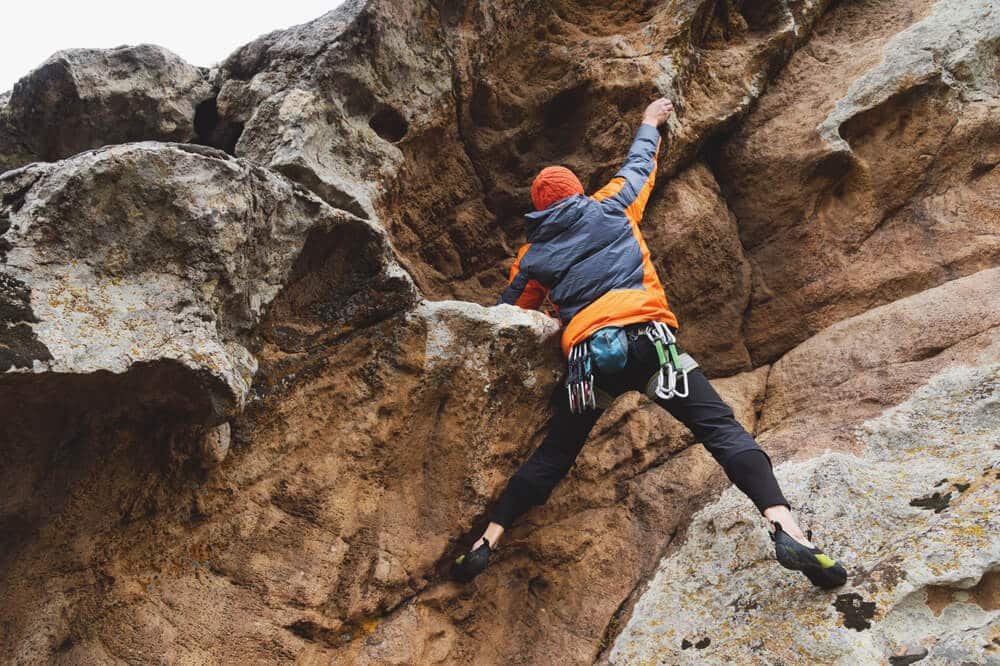
To be clear, I don’t frequently run into hoards of crying rock climbers bumbling around at the top of the cliff, wondering how they are going to get down. But I do interact with a fair amount of climbers who have not thought about going down as much as they have thought about going up.
Similarly, I get asked all the time by clients, spectators, family, and friends about how rock climbers get down.
So, to think about it systematically, I will talk about three forms of descent.
-
Walking Off: after reaching the top of the formation, walking off entails using a descent trail to hike back down to the base of the climb.
-
Lowering: when you reach the top of the climb, lowering is when your belayer lowers you back down to the ground in a controlled fashion.
-
Rappelling: once at the top, rappelling involves threading the rope through an anchor system and using a rappel device and friction hitch to descend down the ropes toward the ground.
Then, I will categorize these three descent options into two categories– single-pitch and multi-pitch – and add some specific nuances to getting down with each descent technique in each category. Then, I’ll add some pro tips you can put into practice to help make descents less risky and more efficient.
Getting Down in a Single-Pitch Setting
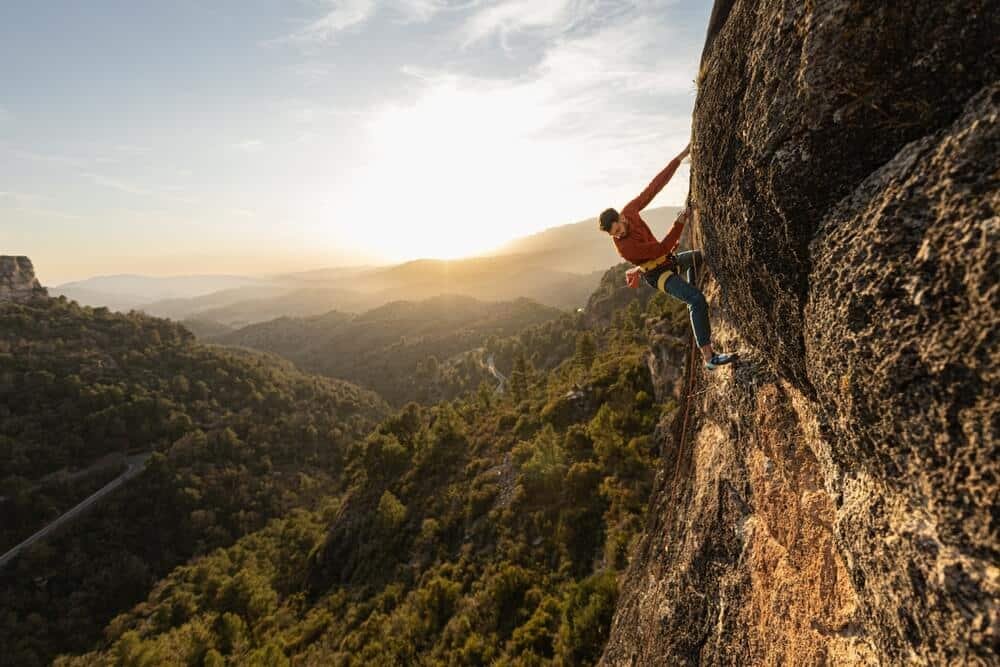
Most rock climbers are single-pitching, meaning they climb one rope length off the ground and then come back down. For example, when you go sport climbing, someone leads the climb and either sets up a top rope or pulls the rope so the next climber can also lead the route.
Whatever the case, someone will have to come down at some point.
Walking Off
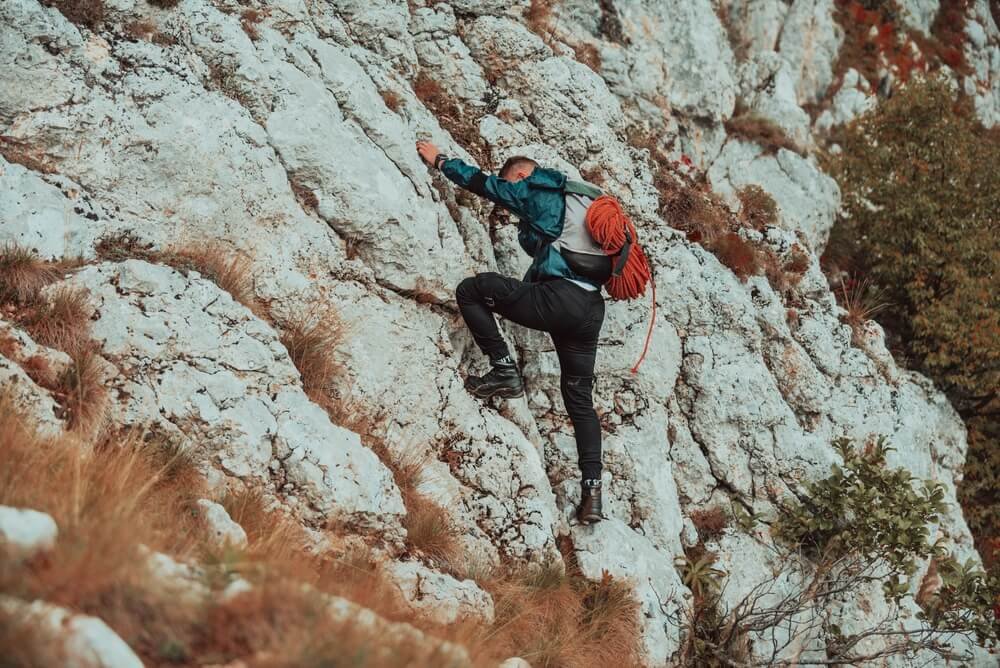
Since the dawn and massive growth of sport climbing, walking off the cliff in a single-pitch setting is less common. That’s because, with bolted anchors atop every climb, the preferred form of descent in a sport climbing context is lowering, which I’ll talk about next.
But there may not be bolted anchors for descending at some cliffs, particularly traditional climbing cliffs.
For example, at the Peterskill in the Gunks of upstate New York, it’s common to walk off after you are done climbing your route. Without a nearby established rappel station (either bolts or a healthy tree), walking off is the most equitable and less risky answer.
Lowering
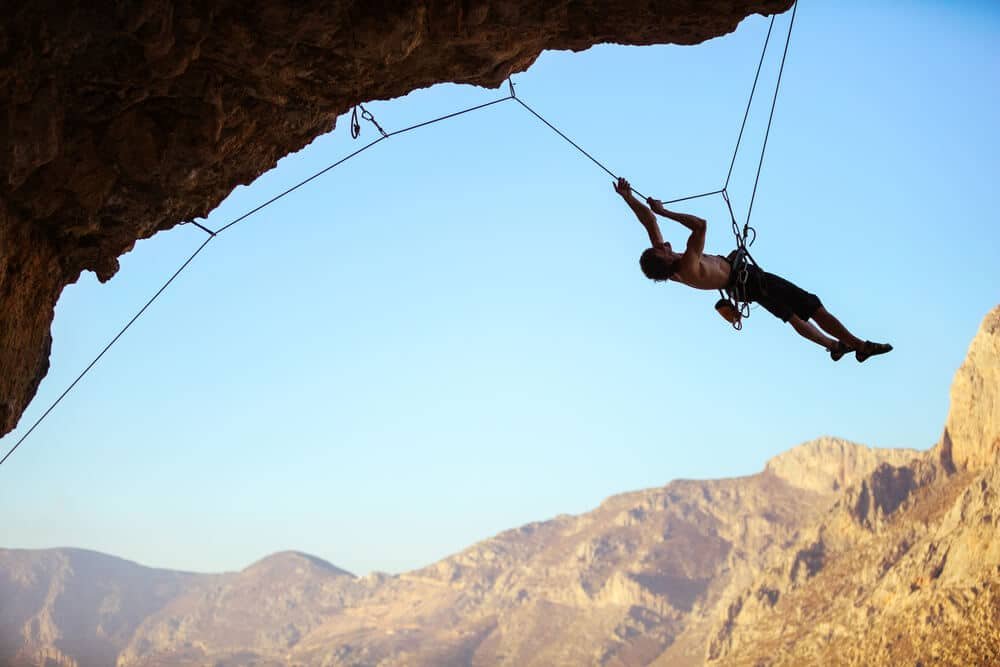
In a single-pitch setting, lowering is by far the best way to get down. It’s much less risky than rappelling, and it’s faster. This means that you can expose yourself less to accidents and rock climb more.
Back in the day, lowering was frowned upon, even at established sports climbing cliffs. That’s because the current understanding, which is now outdated, was that rappelling puts less wear on the fixed anchors. While this is true, the fact is rappelling is a far more dangerous form of descent.
Nowadays, the preferred descent ethic at most sports climbing cliffs is lowering. Yes, this wears the fixed hardware more. However, fixed hardware can easily be replaced, but human lives cannot. So it’s better to wear down the gear and replace it than to expose yourself to an accident while rappelling.
Rappelling
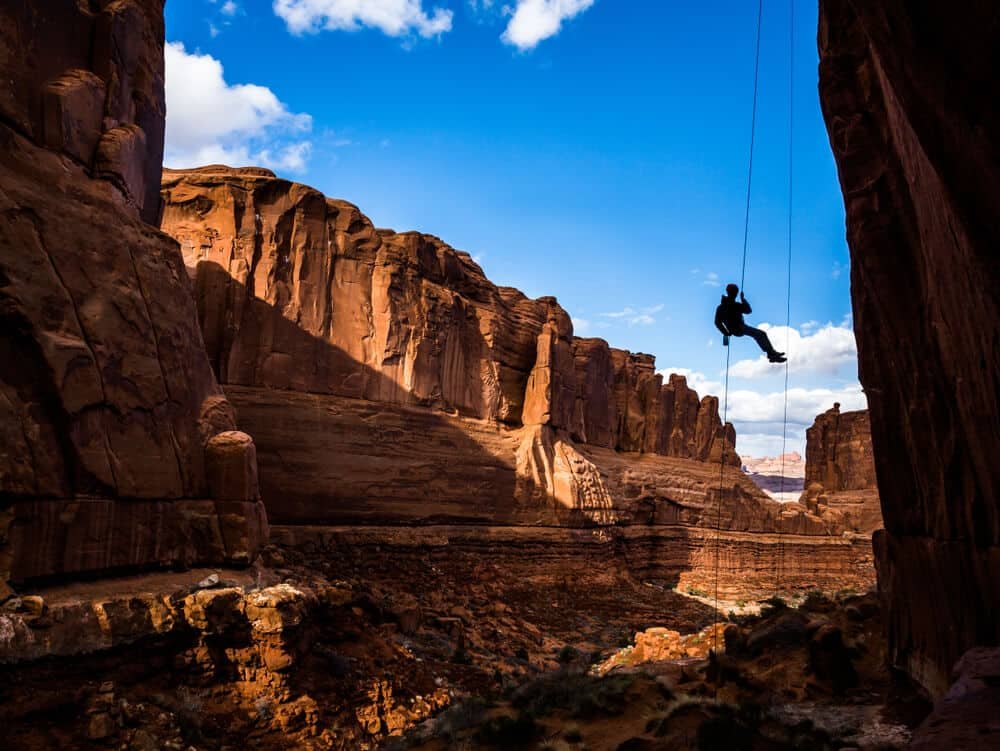
As I just mentioned above, rappelling in a single-pitch setting is now an outdated technique. Whenever you get the chance, be lowered by your belayer and lower your climbing partners. However, technically speaking, rappelling is an accepted form of descent and worth talking about.
Having the knowledge and skills to rig a rappel in various single-pitch contexts using a wide selection of tools and equipment is indispensable.
For example, some anchor orientations are designed for rappelling (i.e., two side-by-side bolts with unequalized rappel rings). You can lower off anchors designed for rappelling, but it will twist your rope. Therefore, you may decide to rappel.
Similarly, some routes make the rope run over sharp edges or rocky slabs. To protect your rope, you may decide to rappel.
Or sometimes, when I’m working with a new client, and I’ve just led a pitch, I choose to rappel so I can be in control of my descent. This allows them to relax more (and me) and transition to preparing to climb the route next.
Getting Down in a Multi-Pitch Setting
 Getting down after a multi-pitch is always more complicated than getting off a single pitch. If you are walking off, there is more walking to do, and if you are rappelling, you’ll probably have to do a multi-stage rappel to reach the ground.
Getting down after a multi-pitch is always more complicated than getting off a single pitch. If you are walking off, there is more walking to do, and if you are rappelling, you’ll probably have to do a multi-stage rappel to reach the ground.
Therefore, because it’s more involved, you should think about it more and make a plan.
Walking Off
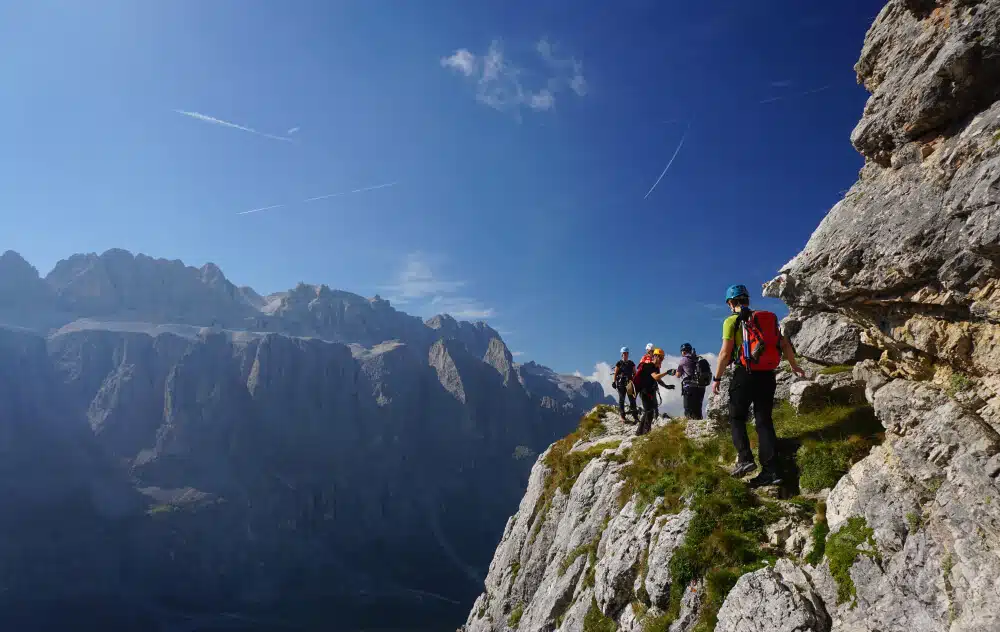
Oftentimes, walking off a multi-pitch is my preferred method. For example, when the weather is good, and you’re prepared for the hike down, walking off can be a fun, beautiful, and stress-free way to descend.
Typically, it’s a less risky way to get down compared to rappelling. However, it does introduce some extra challenges– like bringing approach shoes for hiking and not getting lost or cliffed out on the way down.
Walking off may also not only be walking. Sometimes, walk-offs entail a combination of walking, hiking, and scrambling. With some walk-offs, you may encounter third and fourth-class scrambling or fifth-class downclimbing. Some scrambling and downclimbing scenarios can prove to be as risky as an accident while rappelling.
Therefore, walk-offs that involve scrambling or downclimbing should not be taken lightly.
Rappelling
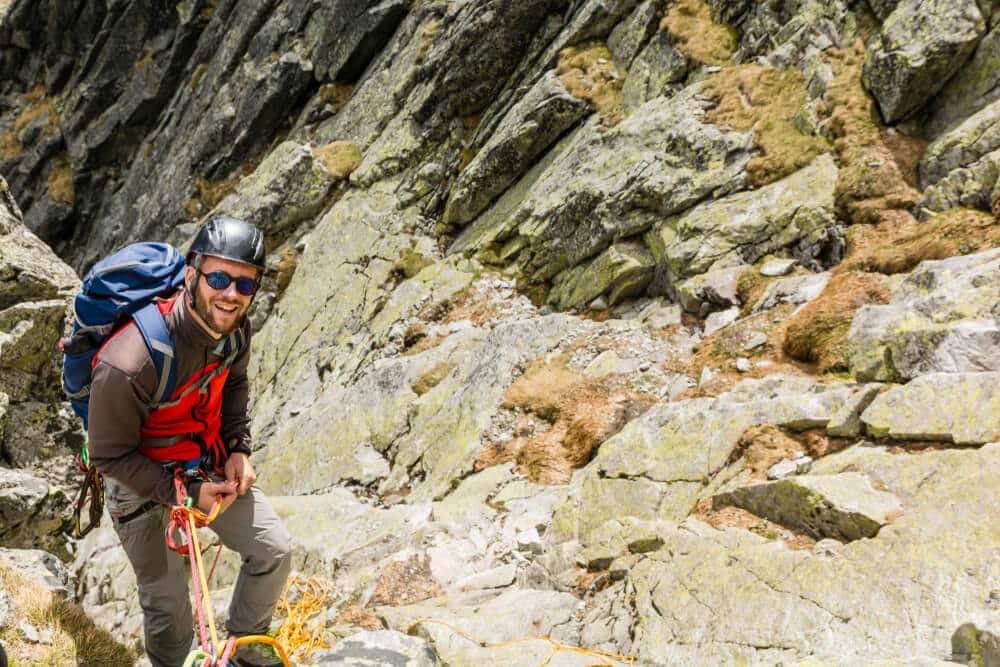
Rappelling after a multi-pitch is an involved process where a mistake could be life-threatening. This is especially true in multi-stage rappels, where you must perform multiple rappels to return to the ground.
Multi-stage rappels are risky because they require you to manage a lot of risks and make a lot of decisions properly to avoid an accident.
For example, in a multi-stage rappel, you must be able to transition from a personal anchoring tether to rigging the rappel system and back to the personal tether at the next station, all the while double-checking your partner’s work, managing the rope from getting stuck, and keeping track of where the next descent anchor is located.
Lowering
Lowering from a multi-pitch is not a super common form of descent, at least for recreational rock climbers. That’s because recreational climbers often lack the proper skills to lower a climber from the top back down to the ground.
However, lowering is a common tactic that climbing guides use to get their clients safely onto the ground, where they can then begin a rappelling descent to get themselves down.
For example, in a scenario where I can lower my climber back down to the ground with a single lower instead of two rappels, I may choose to lower. That’s because it exposes only one climber (me) to the risks of rappelling, and typically, it’s faster to have me rappel twice than rig two rappels for myself and my client.
Considerations for Walking Off After Rock Climbing
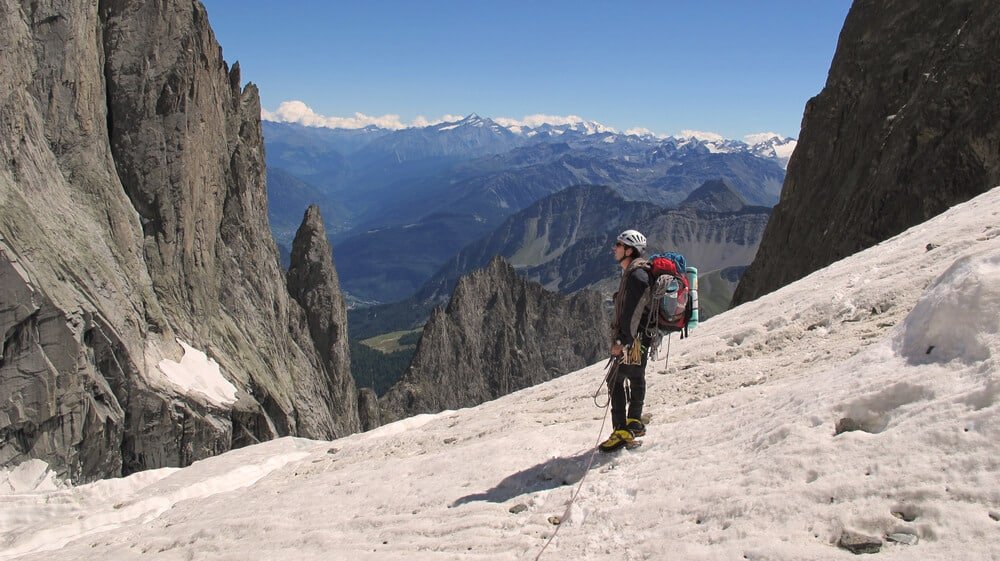
So you want to walk off? Fantastic! Here are some things to consider.
Tidy Up Your Rack and Rope
After topping out and every time before I transition to descending, I tidy my rack on my harness. Even better, if I have a small summit pack with me, I stash the majority of the rack away, leaving out only what I might need for the descent.
Along with the rack is the rope. I always make a clean coil that can be easily accessed if I need the rope. This allows me to move more efficiently on the trail.
In general, avoid transitioning to descending with all sorts of dangling faff that can get stuck or lost on the way down.
Know Where Your Walk-Off Goes and What It Entails
Before leaving the ground, it’s best practice to fully understand what your descent entails. This means understanding how long it is quantitatively speaking, how long it should take, in what direction(s) it goes, and if it involves scrambling or down-climbing. The more you know, the faster and safer you can descend.
Considerations for Lowering After Rock Climbing

Don’t believe in the old-school ethic that prioritizes rappelling over lowering? Me either. But before you lower, here are some tips.
Close Your System
Whenever I am single-pitching, regardless of the length of the climb or the length of my rope, I always tie a well-dressed stopper knot at the end of the rope to close the system. By practicing this habit, I effectively mitigate the risk of running out of rope while belaying or lowering.
Communicate Clearly With Your Climber
Accidents have occurred because the climber at the top of the route was expecting to be lowered while the belayer at the bottom thought they were going to rappel. For a crazy story about this happening in real life, check out Episode 11 from the Enormocast.
To avoid this, it’s vital to communicate clearly about the rope team’s expectations for how the climber wants to come down.
Use an Assisted Braking Device
Assisted-braking belay devices exist now, and they are fantastic. They mitigate a lot of risk regarding losing control of the brake strand while belaying and lowering a climber. If you want an objectively less-risky lowering experience, be it as the climber or the belayer– use an assisted braking belay device.
Considerations for Rappelling After Rock Climbing
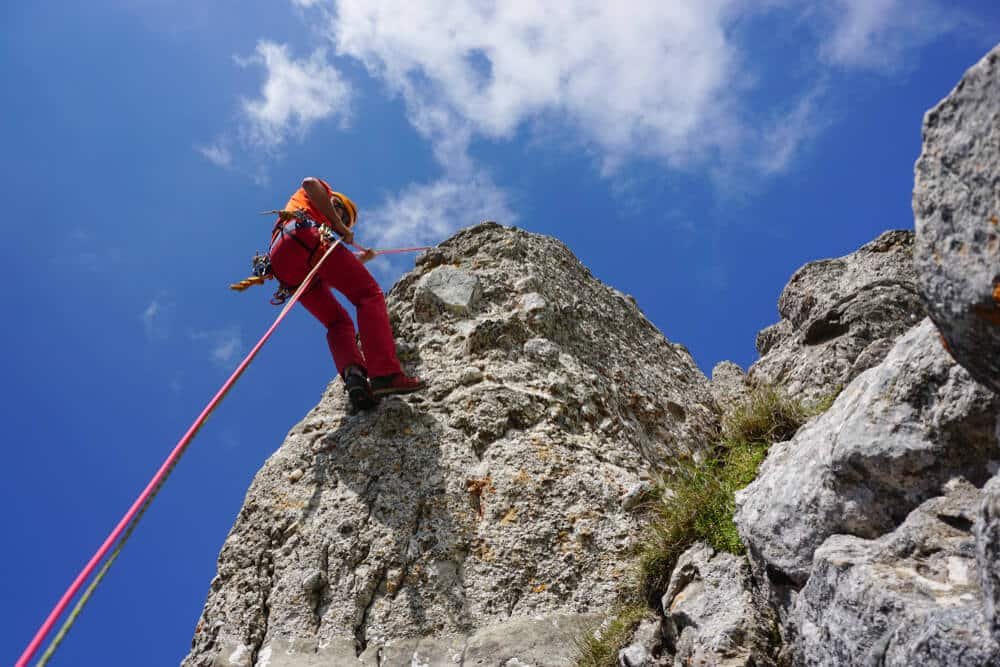
No walk-off after a multi-pitch? Rappelling may be the “best” way to get down.
Close Your System
After threading your rappel rope through the anchor– rig properly tied and well-dressed stopper knots into the ends of your rope to close the system. This will mitigate the risk of rappelling off the ends of your rope.
Don’t want to tie knots for fear of them getting stuck while rapping? Tie the ends into a knot and rig it to your belay loop, that way, you can have a closed system and maintain control of the rope ends.
Know Where Descent Anchors Are
Like walking off, it’s critical to know where the rappel stations are located and how many of them you need to use to reach the ground safely.
Most of the time, the hardest part is finding the first fixed anchor at the top of the cliff. After that, subsequent anchors are typically straight down.
However, that’s not always the case. For example, when rapping the Diamond in Rocky Mountain National Park, two rappel anchors lower down from Table Ledge are off to the right of the original rap line and slightly hidden. If you miss these stations by rappeling straight down, you are in a tricky situation.
Extend Your Rappel with a Friction Hitch Backup
Over the years, we’ve learned a lot about rappelling best practices.
For example, we’ve learned that deploying a friction hitch backup onto your rappel strands with a tube-style device helps mitigate the risk of losing control. We’ve also learned that friction hitch backups function best when the rappel device is extended off your harness.
Therefore, for more control while rappeling off a climbing route– extend your rappel device and back it up.
How Do Alpinists Get Down?
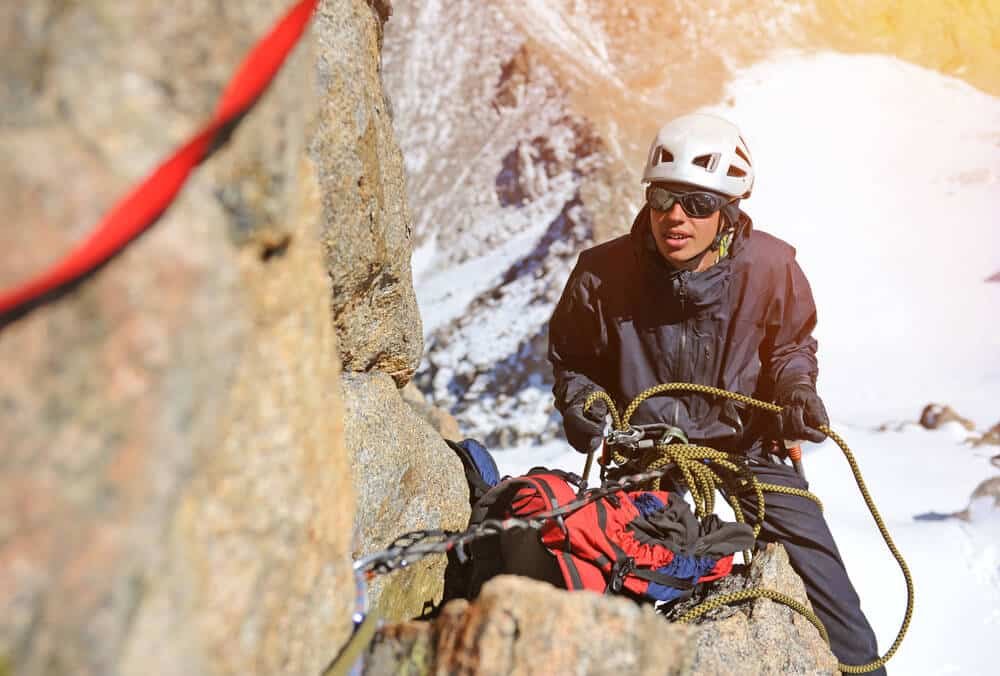
After a huge multi-pitch route in the alpine, climbers rarely walk off. I guess, except for Mount Everest. But even that descent has some rappelling lower down.
However, typically, a lot of mountains in the alpine are just too big and steep to walk off. Therefore, alpinists typically do a multi-stage rappel to reach the ground. Often, there is a descent line separate from the line they climbed up. Other times, alpinists rappel the same route they climbed.
What About Free Solo Climbers?

On the other hand, it’s the opposite for free solo climbers. After topping out a free solo climb, many free solo climbers walk off or down climb. For example, after Alex Honnold’s free solo ascent of El Capitan and Half Dome in Yosemite National Park, he walked off down the backside of the formations.
However, on shorter free solo ascents, like at a sport climbing cliff, free solo climbers may choose to down climb the route instead of walk off.
Final Thoughts- The Summit is Only Halfway
One of rock climbing’s biggest draws is the summit. But as rock climbers, we sometimes forget that the summit is only halfway. By this, I mean that to truly be done and “safe”– whether on a sport climb, while free soloing, trad climbing, or in alpine climbing– we need our feet on the ground.
So the next time you go out for a multi-pitch climb or a day of cragging, remember– most accidents happen on the descent. Therefore, it’s vital to do your due diligence when learning about climbing routes and understand what descending technique you need to deploy to get down safely.



